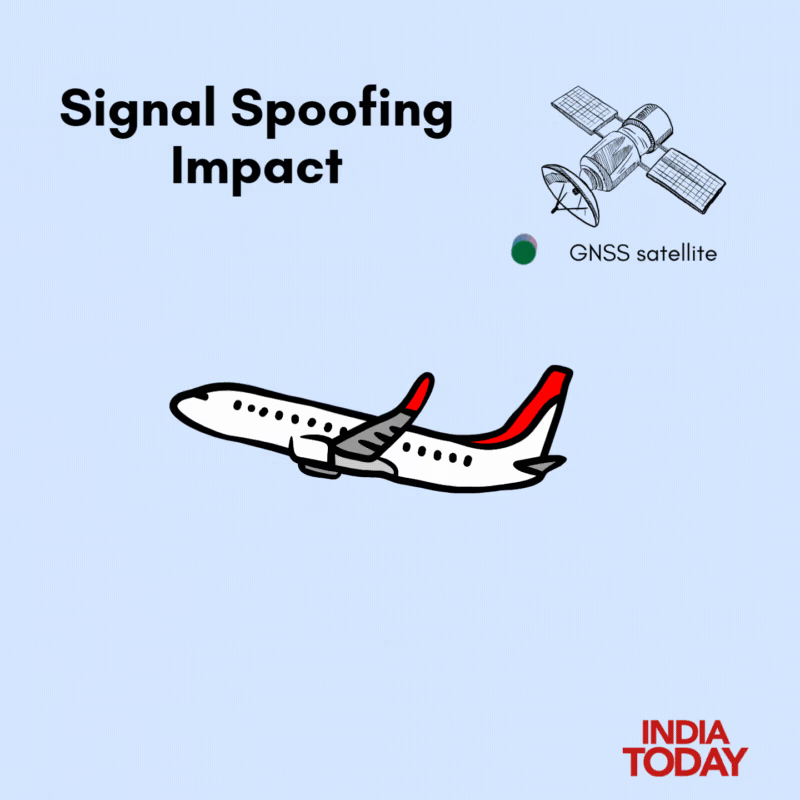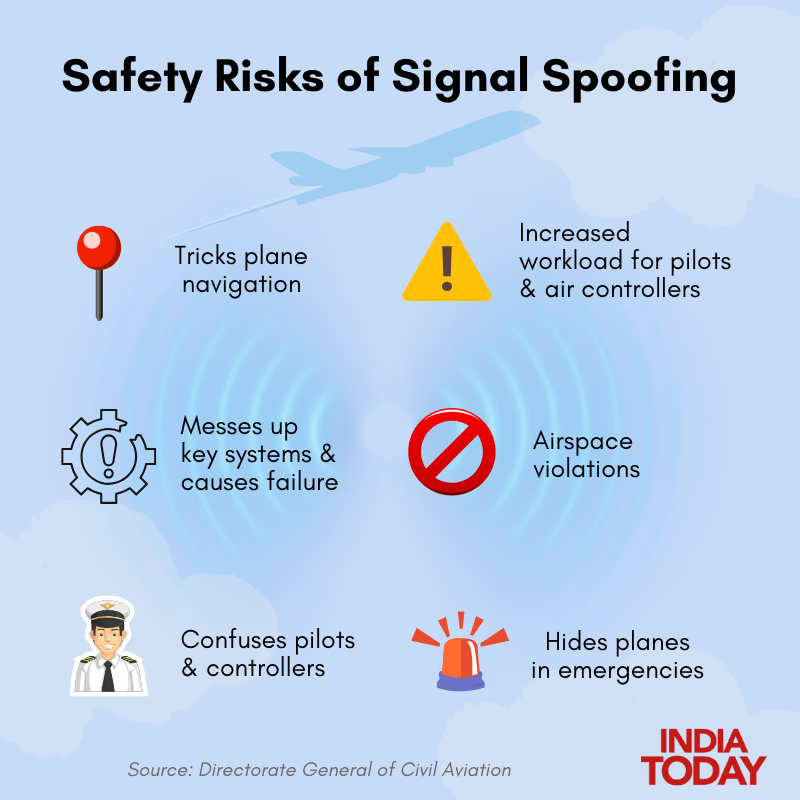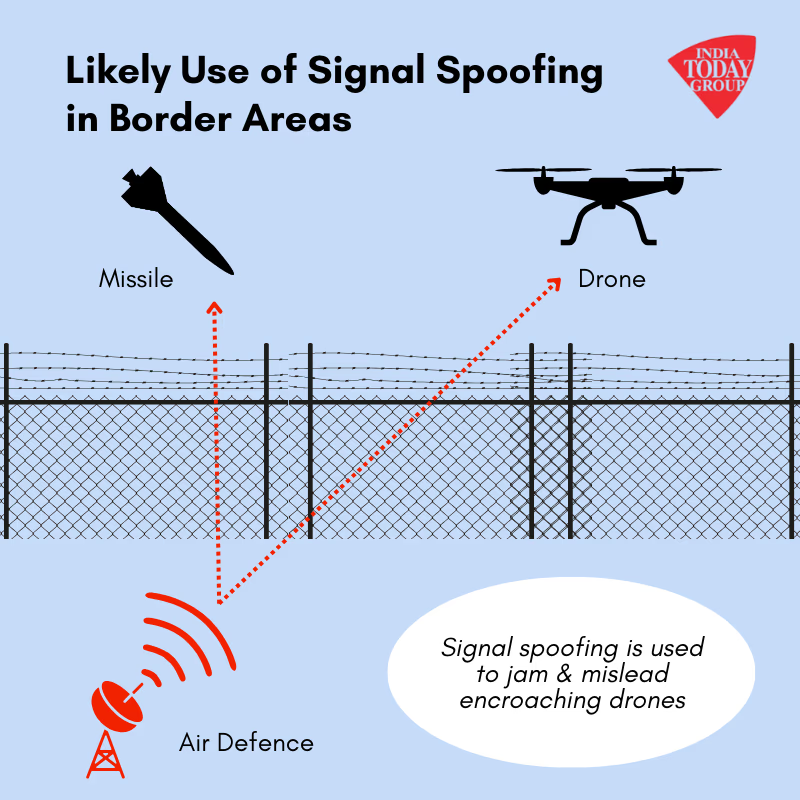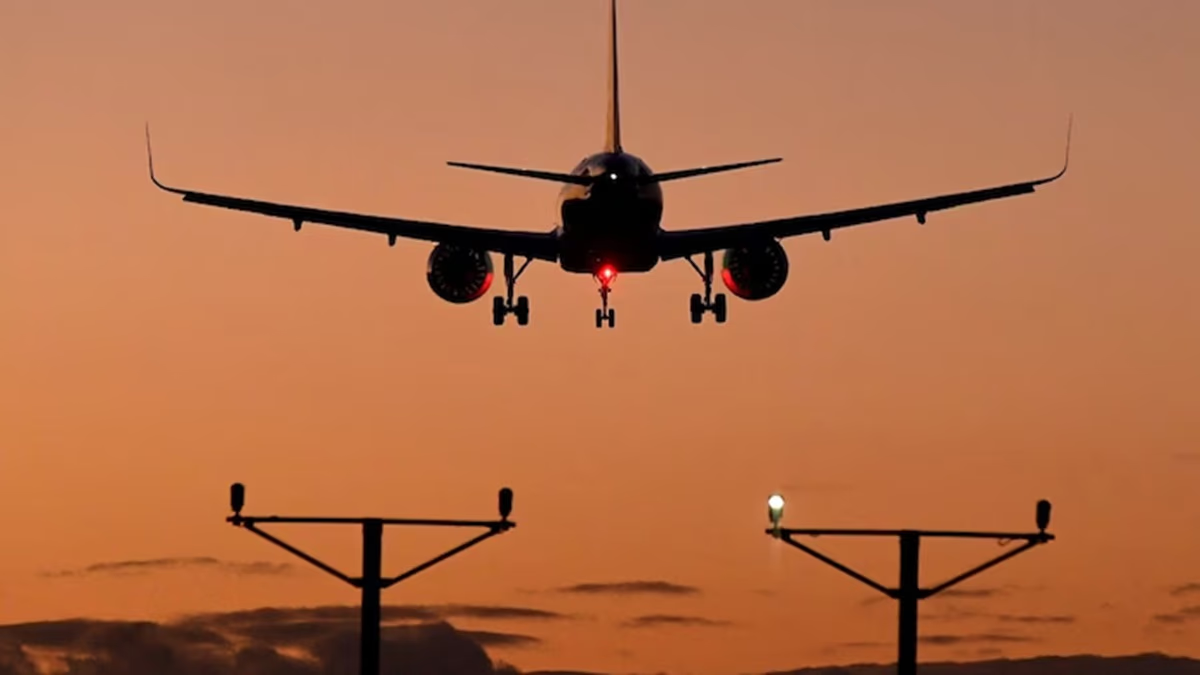Aircraft flying over the border regions of Amritsar and Jammu in India are facing a growing challenge: electronic signals that mimic satellite navigation beams. The danger of these fake signals is that they can compromise the safety of passengers and crew. The government informed Lok Sabha on Thursday that over the past two years, more than 450 Indian flights have reported 'signal spoofing'. But what exactly is signal spoofing, how does it impact civil flights, and why does it occur? Let's dive in...
Signal Spoofing
Flying aircraft and air controllers on the ground rely heavily on satellite signals received from the Global Navigation Satellite System (GNSS) for navigation, surveillance, and tracking.

Source: aajtak
These satellite signals are typically weak, causing aircraft systems to latch onto stronger signals that mimic satellite ones – a phenomenon known as signal spoofing. According to OPSGROUP, a platform that shares information within the aviation industry, GNSS spoofing severely impacted civil aviation in September 2023. Reports indicate that by August 2024, around 1,500 flights per day experienced signal spoofing.
According to the central government, between November 2023 and February 2025, approximately 465 flights in India, especially around the Amritsar and Jammu regions, were affected by GPS/GNSS spoofing. According to OPSGROUP, fake signals can disrupt the normal operations of the Flight Management System, Ground Proximity Warning System, Aircraft Clock, Weather Radar, Controller-Pilot Data Link Communication, Automatic Dependent Surveillance-Broadcast (ADS-B), and Automatic Dependent Surveillance-Contract (ADS-C).
Security Challenges Posed by Signal Spoofing
Spoofing is considered a safety risk to flight operations because it disrupts the regular functioning of essential instruments on the aircraft. If this occurs, the aircraft may deviate from its flight path, potentially depriving pilots of crucial data about the geographical area they are flying over, thereby increasing the risk of severe accidents.

Source: aajtak
A circular issued by the DGCA (Directorate General of Civil Aviation) highlights that jamming or spoofing attacks could provide pilots with misleading navigation or terrain information, adversely impacting flight security. The DGCA circular suggests that the effect of a spoofing attack can be temporary, improving upon leaving the affected area, or permanent, leading to irreparable situations.
In a safety alert issued in January by operators, the US Federal Aviation Administration (FAA) mentioned that GPS spoofing poses a potential threat to flight security in civil aviation. Although alternative systems for navigation still exist in aircraft, the GPS Innovation Alliance highlights that these analog systems are not as effective as GPS and other GNSS signals. GPS/GNSS spoofing attacks mainly occur around conflict zones, with the highest number of incidents in the eastern Mediterranean near Israel, Lebanon, Cyprus, and Egypt. A report by OPSGROUP in September 2024 notes numerous recorded spoofing cases in the Black Sea, western Russia, and along the India/Pakistan border.
Signal Spoofing Utilization
Signal spoofing is often used around conflict zones as a defensive tool against drones and aircraft that violate airspace boundaries, alongside missile systems and other guided projectiles. It is deployed to disrupt flight paths of these GPS-guided weapons, missiles, and both autonomous and manned vehicles. During civil aircraft flights in these regions, they may unintentionally become targets of signal spoofing.

Source: aajtak
Since India's airstrike in 2019, Pakistan has been bolstering its air defense along the border and may have deployed systems emitting signals that mimic GPS/GNSS. Police, other law enforcement agencies, and security forces deploy spoofing devices to hinder drone operations in sensitive areas. Counter-drone systems, many of which are stationed near Pakistan's border areas, are believed to employ signal spoofing to ground drones.
Amritsar and Jammu are among the most spoofing-affected border areas in India, where, in recent years, enemy drones have attempted to infiltrate Indian territory with weapons, ammunition, drugs, and money. According to reports, the Border Security Force (BSF) successfully shot down or prevented the entry of 107 and 184 Pakistani drones in the Amritsar and Jammu sectors in 2023 and 2024, respectively.




